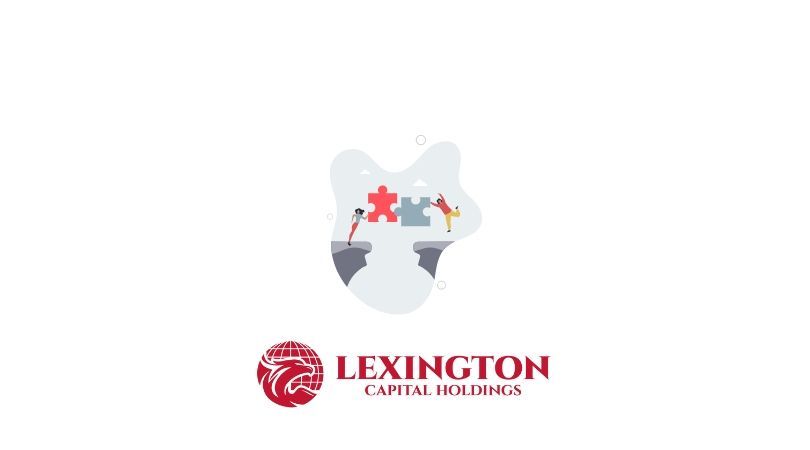How Small Businesses Can Compete with Corporate Giants in 2025
How Small Businesses Can Compete with Corporate Giants in 2025
In a world where big corporations dominate the marketplace, small businesses might seem at a disadvantage. However, the evolving landscape of 2025 presents new opportunities for smaller enterprises to shine. With customers increasingly valuing personalization, innovation, and community connections, small businesses are uniquely positioned to compete on aspects that even the largest corporations often overlook. By focusing on their strengths and adopting smart strategies, small businesses can not only survive but thrive alongside industry giants.
Here are some actionable strategies for smaller businesses to level the playing field and thrive in a competitive market.
1. Leverage Your Agility
Small businesses can pivot faster than larger corporations, allowing them to respond quickly to market trends, customer feedback, or economic shifts. Use this to your advantage by:
- Keeping a close eye on market data and customer preferences.
- Experimenting with new products or services in small batches to test what resonates.
- Reacting swiftly to competitor moves, filling gaps they may overlook.
2. Invest in Technology
Modern technology is a great equalizer. Affordable tools and platforms can help you compete effectively:
- CRM Tools: Platforms like HubSpot or Zoho help you manage customer relationships, creating personalized experiences that large corporations may struggle to replicate.
- Marketing Automation: Tools like Mailchimp or Buffer enable small businesses to launch professional campaigns with minimal resources.
- Data Analytics: Leverage tools like Google Analytics to gain insights into customer behavior and refine your strategies.
3. Double Down on Customer Experience
Large corporations often struggle to provide personalized service at scale. Small businesses can stand out by:
- Building strong relationships with customers, remembering their preferences, and going above and beyond to meet their needs.
- Offering a seamless and personalized buying experience, both online and in-store.
- Actively seeking and responding to customer feedback to refine your offerings.
4. Build a Distinct Brand Identity
In 2025, consumers are increasingly drawn to brands that reflect their values. To differentiate yourself:
- Define your unique value proposition—what makes your business stand out?
- Use storytelling to connect emotionally with your audience, sharing your company’s journey, values, and impact.
- Engage with your audience authentically on social media, showcasing your human side and building trust.
5. Capitalize on Local Loyalty
As large corporations expand their footprint, small businesses can win by staying hyper-local:
- Get involved in your community through sponsorships, events, or charitable initiatives.
- Partner with other local businesses to cross-promote products or services.
- Highlight your local roots in marketing campaigns to build loyalty among community members.
6. Focus on Niche Markets
Corporate giants often aim to capture mass-market appeal, leaving niche markets underserved. Identify areas where your expertise or products cater to a specific audience:
- Serve a demographic or market need that larger competitors overlook.
- Offer tailored solutions or customizable options that resonate with smaller, targeted audiences.
- Position yourself as an expert in your niche through blogs, webinars, or speaking engagements.
7. Prioritize Financial Efficiency
While corporate giants may have deep pockets, small businesses can compete by managing finances wisely:
- Secure flexible funding options, like a business line of credit, to navigate cash flow challenges and seize growth opportunities.
- Optimize operations to reduce waste and improve efficiency.
- Invest strategically in areas that directly impact customer satisfaction or business growth.
8. Build Strategic Partnerships
Collaboration is a powerful tool for small businesses:
- Partner with complementary businesses to offer bundled services or co-marketed promotions.
- Join industry associations or networks to gain exposure and credibility.
- Leverage affiliate programs to expand your reach without a massive advertising budget.
9. Adopt a Growth Mindset
Finally, success in 2025 will require an adaptable and innovative mindset:
- Encourage your team to continuously learn and embrace new challenges.
- Stay informed about industry trends and emerging technologies.
- Be willing to take calculated risks that position your business for future growth.
Final Thoughts
Small businesses may not have the scale of corporate giants, but they have the advantage of flexibility, community connection, and the ability to provide unparalleled service. By leveraging these strengths and embracing smart strategies, small businesses can carve out a competitive edge in 2025 and beyond.
The key is to focus on what makes your business unique and turn those qualities into your greatest competitive assets. With a proactive approach, the right tools, and a strong sense of purpose, your small business can not only compete but thrive.

When you apply for business funding, your application goes through a critical stage—underwriting. This is where lenders evaluate risk and determine whether your business qualifies for financing, and under what terms. Understanding what underwriters look for can help you strengthen your application, avoid delays, and increase your approval odds.

Not every business enjoys a steady stream of income. For many companies—especially those in seasonal industries, contracting, or project-based work—revenue can shift dramatically from month to month. These ups and downs are normal, but they can make managing cash flow, payroll, and operating expenses challenging. At Lexington Capital Holdings, we understand that fluctuating revenue doesn’t mean instability—it just means you need the right financial tools to stay balanced and grow confidently.

The Challenge of Hyper-Growth For many startups, growth isn’t the problem—it’s managing it. Rapid scaling demands capital for hiring, marketing, technology, and operations. But too often, founders find themselves cash-strapped right when they need resources the most. Choosing the right financing strategy can be the difference between sustainable growth and burning out too soon.

When it comes to business financing, the terms you secure are just as important as the funding itself. Lower interest rates, flexible repayment schedules, and higher approval amounts can mean the difference between simply surviving and setting your business up to thrive. The good news? Business owners often have more negotiating power than they realize. At Lexington Capital Holdings, we’ve seen firsthand how preparation and strategy can help secure stronger terms. Here’s how you can do the same:

For many businesses, waiting on customer payments can feel like standing still when you’re ready to move forward. Delayed invoices, extended payment terms, or slow collections create cash flow gaps that make it harder to cover expenses, pay employees, or seize new opportunities. The truth is—even successful, profitable companies face this challenge. The key isn’t avoiding it, but managing it strategically with the right funding solutions

Securing business funding is a milestone—but the real impact comes from how you put that capital to work. Every dollar borrowed should fuel momentum, strengthen operations, and generate measurable returns. Unfortunately, too many businesses stop at “getting approved” and miss the chance to maximize their return on investment (ROI). At Lexington Capital Holdings, we believe funding isn’t just about access to capital—it’s about creating opportunity. Here’s how to ensure your financing delivers the highest ROI:

In today’s fast-paced business environment, standing out from the competition requires more than just great products and services—it takes strategy, timing, and smart financial decisions. One of the most overlooked tools in building and maintaining a competitive advantage is business financing. When leveraged correctly, financing doesn’t just help you “get by”; it can actually position your business to outpace competitors and capture new opportunities.

In business, surprises aren’t a matter of if—they’re a matter of when. Whether it’s a sudden equipment breakdown, an unexpected dip in sales, or a market shift that requires quick adaptation, unforeseen expenses can test even the most successful companies. The difference between thriving and struggling often comes down to how well you’ve prepared.

When most business owners hear the word debt, it sparks feelings of stress or risk. But here’s the truth—debt isn’t always a bad thing. In fact, when managed strategically, debt can become one of the most powerful tools to grow, stabilize, and scale your business. At Lexington Capital Holdings, we work with business owners every day who are navigating this very question: Is taking on debt the right move for me? Let’s break down the difference between “good” and “bad” debt so you can make informed financial decisions.

In today’s business world, financing options are everywhere—but choosing the right path can feel overwhelming. From traditional bank loans to alternative lending solutions, the fine print and fast-changing requirements often leave business owners spending more time deciphering funding terms than actually running their businesses. That’s where the value of a dedicated funding advisor truly shines. At Lexington Capital Holdings, we’ve seen firsthand how personalized guidance can transform the funding experience for business owners of all sizes.

